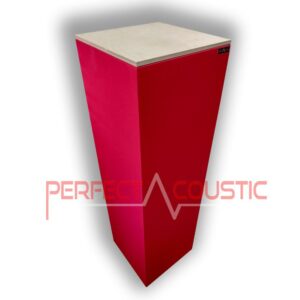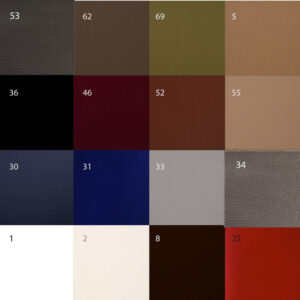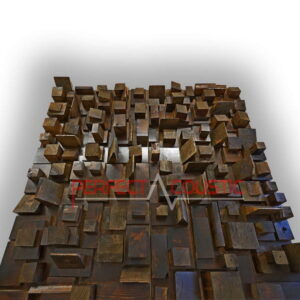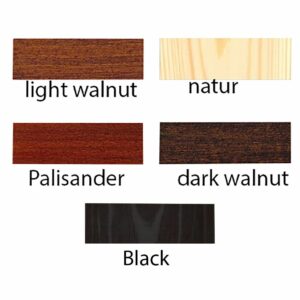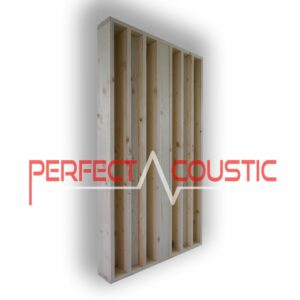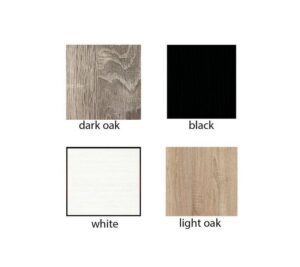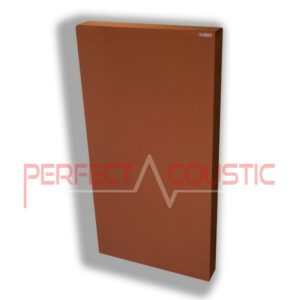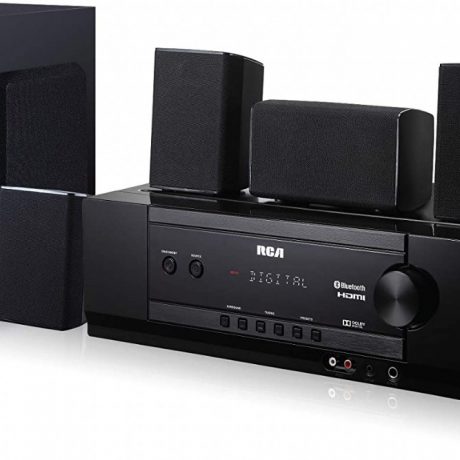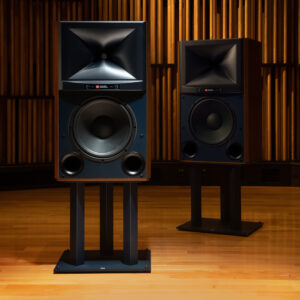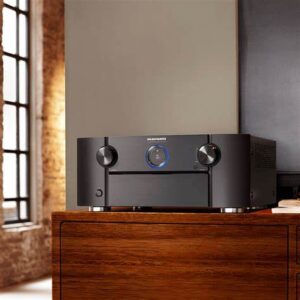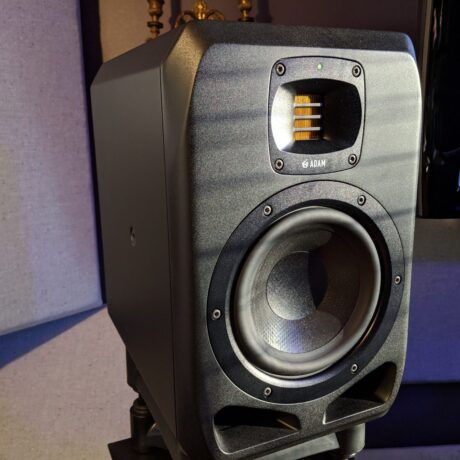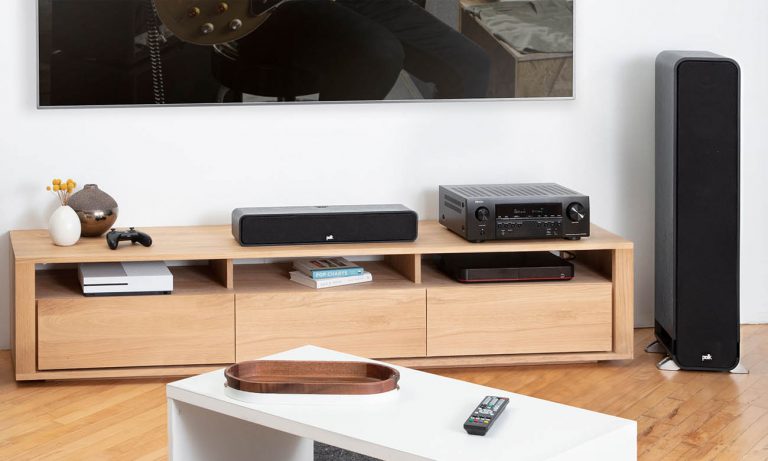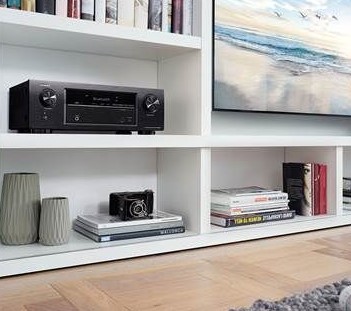We tested the KEF LS50 Meta bookshelf speakers and liked it!
The British KEF brand has been in the audio and hi-fi business since 1961. The KEF brand name is short for “Kent Engineering and Foundry”. The company was founded by Raymond Cooke.
To celebrate its anniversary, KEF launched the original LS50 loudspeakers in 2012. These floor-standing speakers were a huge success, so much that they have continued to produce them unchanged ever since in large quantities.
The company’s engineers did not sit back, however, and the result is the fresh-looking LS50 Meta Speakers.
The KEF design
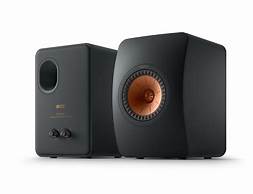
The LS50 Metas are not dissimilar to the original LS50, yet they are not exactly the same in many ways. The Meta has a matt casing, which is also an advantage because it prevents fingerprints and dust from showing.
The shape and size of the cabinet is optimal and the curved front panel is made of polyester combined with fibreglass and calcium carbonate – creating an impressively rigid and well-controlled base for the Uni-Q technology, the company’s own innovation.
-
Cubic acoustic sound panels80 € – 109 € +Vat
-
Rustic-Vintage sound diffuser-Made of real pine65 € – 129 € +Vat
Some important features of the KEF LS50 Meta:
- Maximum power 106dB
- Sensitivity 85dB
- Frequency response 79Hz – 28kHz
- Impedance 8 ohms
- Dimensions (height) 30.2 x 20 x 27.8 cm
- Weight 7.2 kg
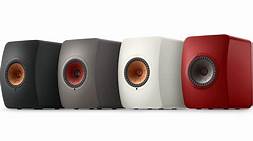
The KEF LS50 Meta is the world’s first Uni-Q loudspeaker to use “Metamaterial” technology. The rest of the two-way bass-reflex speaker cabinet is made from MDF, which is heavily braced and carefully damped to minimise resonances.
The LS50 Metas are available in four colours – white, jet black, titanium grey and Royal Blue Special Edition.
A thick, rigid speaker cabinet ensures the right stability. The modern, clean look is easy to integrate into almost any style of room. Decorative and youthful in appearance.
The only obvious change from previous models is the rear panel. The holes for the front baffle mounting screws have disappeared, giving the speaker a neater, tidier look. The baffle is made of DMC compound, which, together with internal reinforcements, reduces internal vibration. The thick MDF sheets, courtesy of CFD (Computational Fluid Dynamics) technology, delay turbulence and keep the midrange cleaner.
MAT-Metamaterial Absorption Technology is used to create a labyrinthine system, resulting in a cleaner, more natural, distortion-free sound.
With MAT, the speaker successfully copes with sound coming from the rear of the 25 mm aluminium tweeter dome. In conventional designs, this sound usually flows into the chamber behind the dome, where it is mostly absorbed by the damping material. But some sound energy always bounces off the dome, causing distortion.
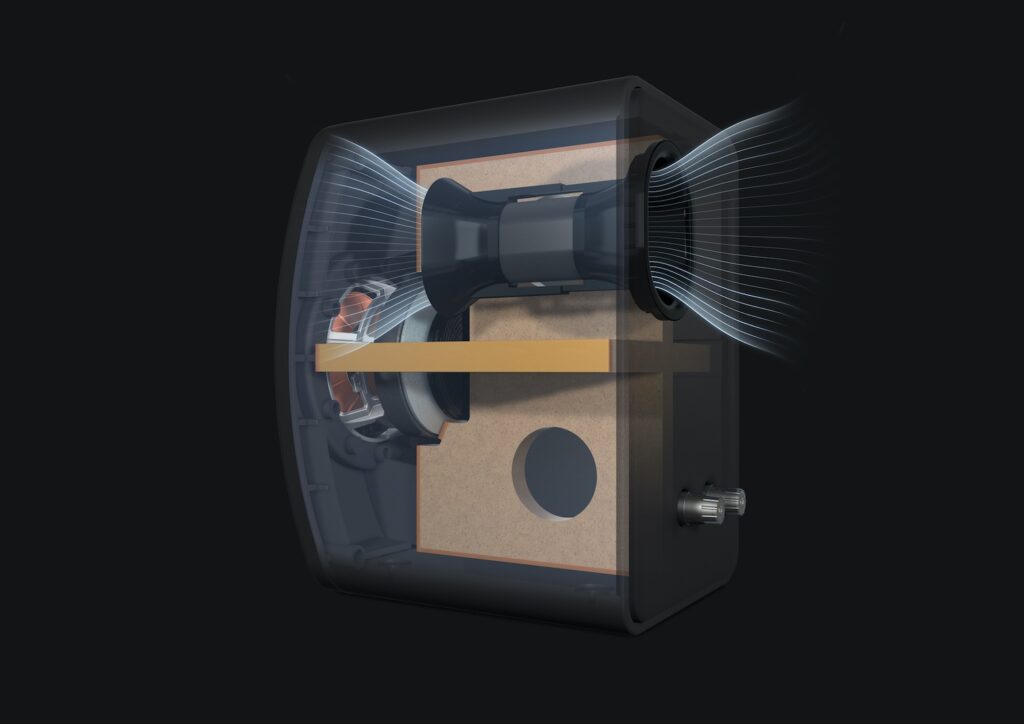
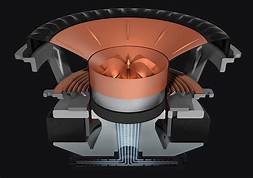
In this case, however, the backward sound travels through a system that looks like a plastic circular maze. It is layered and consists of 30 tubes, each of which picks up a different frequency. KEF claims that after combining the tubes, a wide range of frequencies – from about 600 Hz upwards – are picked up much more efficiently than with alternative methods. The result should be a cleaner, less distorted high. The reflex port is wider, allowing more air to flow in and out. The 130 mm speaker has been hinged into the front panel using screws. The Uni-Q diaphragm and large magnet also further improve the sound.
These aren’t particularly sensitive speakers, with a minimum impedance of just 3.5 ohms at 85 dB/W/m nominal power, so it’s worth pairing them with a higher-power amplifier.
At just 30 cm high, the Meta speakers are quite compact, but they may not be suitable for bookshelves or direct wall mounting. They won’t sound bad if you do, but they’ll sound much better if you place them 50 cm away from the side walls in a room.
-
QRD Diffuser171 € – 269 € +Vat
-
Broadband sound panel-It can even be used as a ceiling element44 € – 241 € +Vat
The sound
We tested the LS50 Meta speaker pair in an average-sized living room. We paired the speakers with a Denon AVR X3700H home theatre amplifier, which turned out to be a good choice.
The room’s acoustics, according to our measurements, were ideal, thanks to the Art diffusers on the walls and the photo-printed sound absorption panels. Bass traps were placed in the corners, so there was no need to worry about echoes and excessive basses.
It didn’t take long to notice that the LS50s were a vast improvement over their predecessors. While the basic sonic character remained unchanged, the newer models offered a clarity and subtlety that the original LS50s were not capable of at this level.
We experienced a fine, accurate and detailed sound when listening to a wide range of musical genres. In case of instrumental works, there was an optimum gap between the different instruments.
These compact speakers produced a surprisingly full-bodied, authoritative sound despite their size.
It seems that Metamaterial technology really works. These new KEFs sound much clearer and more refined than ever before, especially at higher frequencies.
At very high volumes they sometimes produced a slightly fainter performance, but this was no serious default.
The KEFs sound smooth and well balanced, and while they can’t mask the shortcomings of poor recordings, they don’t degrade the sound.
The KEF Uni-Q design is well presented, the LS50 Meta generates an expansive and tightly focused soundstage, and the stability of the soundstage is perfect. The basses were also quite intense, of course, if you insist on wall-shaking, thundering basses, you may want to choose another speaker or get a subwoofer.
A hint for the end
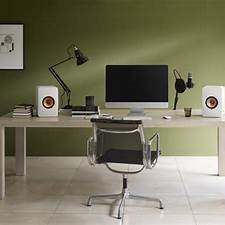
We’ve always loved the LS50 and this new version takes performance to a significantly higher level. We think KEF has taken a big step forward with the Metamaterial technology, and it’s immediately noticeable in the sound. These speakers deliver a balanced, natural and clear sound, and thanks to the robust design and internal damping, you can expect distortion-free performance. We were also pleased with the bass range, although for punchy, really serious basses we’d recommend a more powerful speaker. It’s very important to pair KEF speakers with a more powerful amplifier for optimum sound. We heard detailed, dynamic and spacious sound, which was a pleasant surprise for a speaker of such a compact size.
G.H.
Written by Róbert Polgár

